Volume Sample Shaders - Arnold for Houdini
In this tutorial, we will cover how to radically change the appearance of a volume using the VolumeSampleRGB shader to produce a thick, 'oily', smoky-looking volume. This shader, along with the volume_sample_float shader, has 'post-production' style attributes such as contrast and gamma. These attributes are very useful for 'fine-tuning' the appearance of a volume. In this example, the VolumeSampleRGB shader has been used to convert a typical fire volume into something that looks more like thick smoke. We will use a default fire simulation from the Pyro FX shelf in Houdini that has been written to disk as a volume VDB.
The VDB file can be downloaded here.
The scene can be downloaded here.
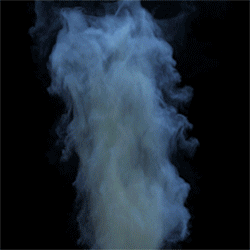
Volume
- Start off by creating a Volume from the Arnold Shelf.
- In the File path of the Volume, open the file - default_flame.114.vdb
- In the Grids field type 'density'. This is the name of the dynamic field group that the Volume VDB was saved with.
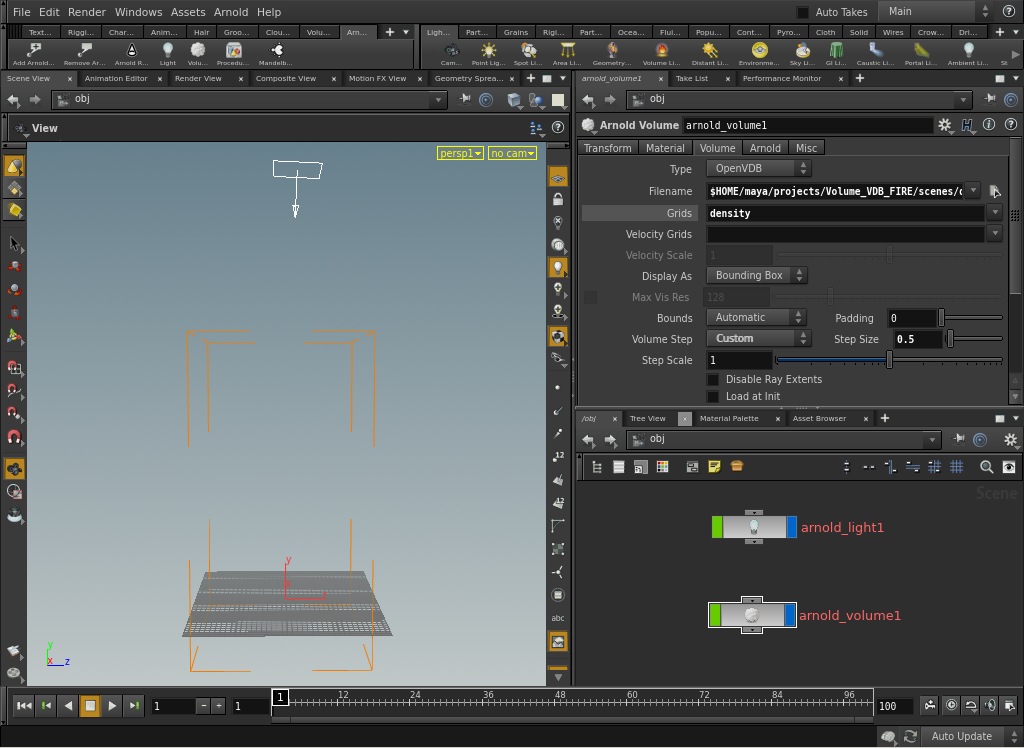
VDB volume with grids 'density'
Standard Volume
- Select the Material tab of the Volume.
- Increase the Volume Density to around 200. Don't worry about this value too much. We will be using the VolumeSampleFloat to adjust the amount of scattering in the volume.
Shading
Open the arnold_vopnet in the Arnold Volume.
Create a VolumeSampleFloat shader and connect the float attribute of the VolumeSampleFloat shader to the Density parameter.
- Now that we have got the technical details out of the way, it's time to have some fun playing with the various attributes of the Volume Sample Float shader. However, before we continue, we must ensure that we enter the word 'density' into the channel attribute of the Volume Sample Float shader; otherwise, it won't be able to see the density channel in our volume.
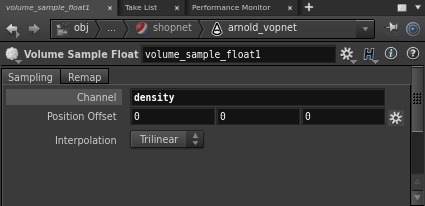
Enter 'density' into the channel attribute
Below are some other examples of changing the Volume Sample Float shader's attributes:
Contrast
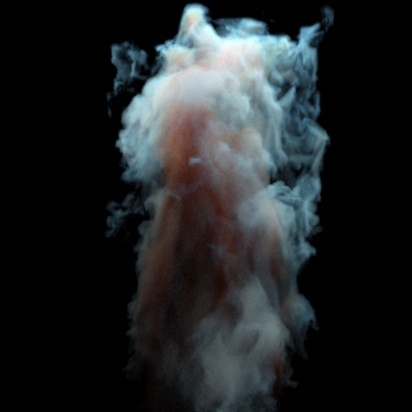 |
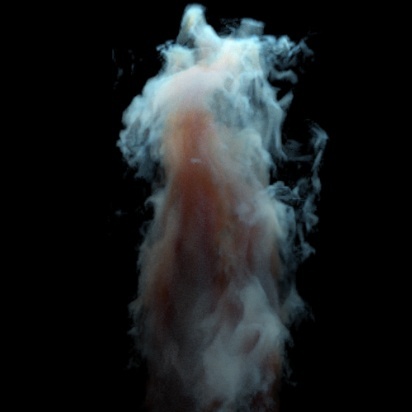 |
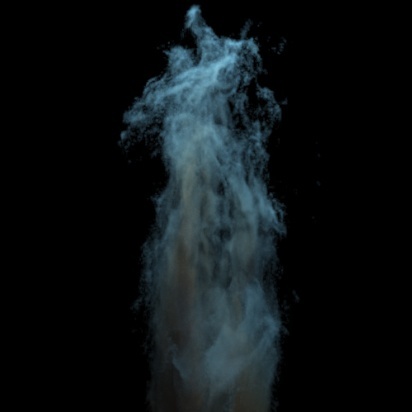 |
| 1.1 | 1.25 | 1.5 |
Bias
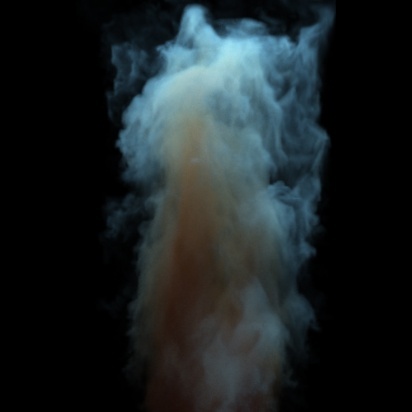 |
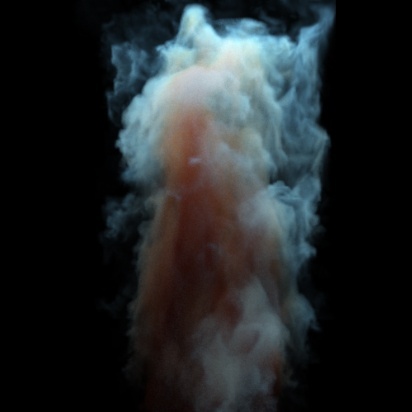 |
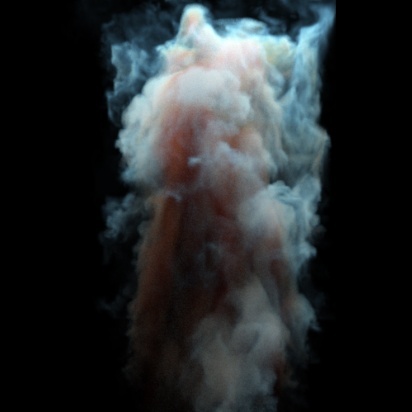 |
| 0.1 | 0.25 | 0.5 |
The final corrections used in this example involved adjusting the Contrast, Gain, and Output Max attributes as per the image below:
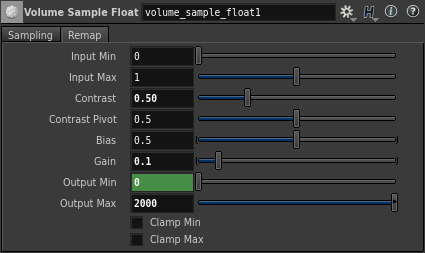
Final attributes for Volume Sample Float
Volume Ray Depth
Increasing the volume ray depth can also have a dramatic effect on the appearance of the volume. Remember to increase the number of Volume Samples to compensate for any resulting noise. In this example, 6 Volume Samples were used.
When increasing the Volume Ray Depth, you may need to reduce the exposure of the scene lighting to compensate for the additional multiple scattering of illumination in the volume.
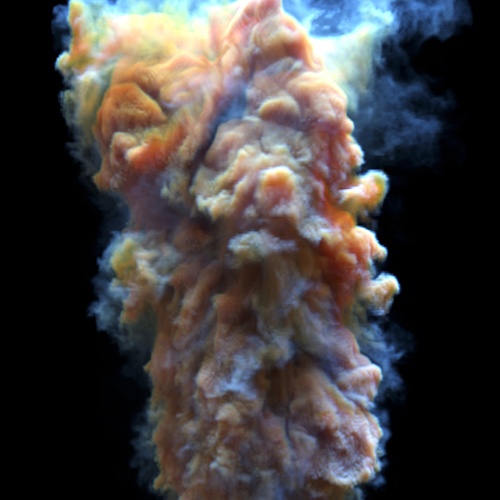 |
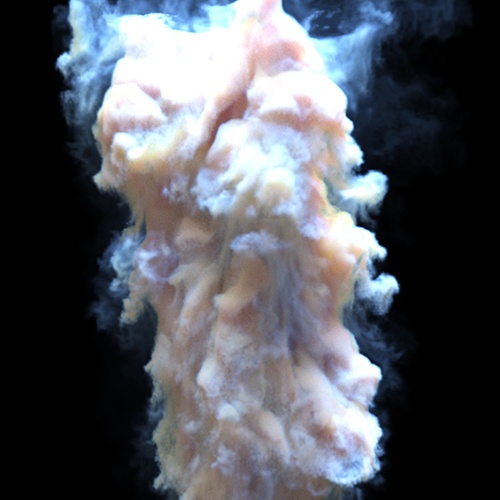 |
| 0 | 6 |
